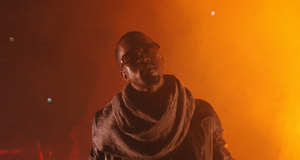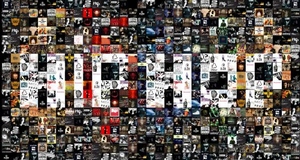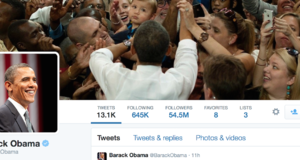From Elon Journal of Undergraduate Research in Communications VOL. 6 NO. 1The Impact of Technology on Music Stars' Cultural Influence
IN THIS ARTICLE
KEYWORDS
AbstractThis research paper addressed how technology has changed cultural relationships consumers have with music. The music industry’s business model has undergone substantial change over the last decade, and understanding artists’ cultural influence is critical in reevaluating their position in society. After a literature review tracking influence through the decades since the vinyl era, the author conducted a survey to determine how college students interact with music artists on Twitter and how they consume music. The results demonstrated high social connectivity of users to artists through Twitter and high levels of consumption of an individual artist’s music through streaming services like Spotify. These findings suggest that modern media give music artists influence over a greater number of people. I. IntroductionFew industries have gone through as much fundamental change as the music business. Technology has altered the structure of the industry, and the role of the artist has shifted as a result. From vinyl records to music streaming, the way society consumes music has changed from generation to generation. The ease of access that modern forms of music consumption provides individuals has also dramatically changed the perception of the iconic celebrity. No longer do powerful record labels have complete marketing control over a musical artist’s image. Through contemporary consumption patterns, a teenage electronic DJ can reach hundreds of millions of listeners with digital media; and an unknown band can reach celebrity heights of popularity with a viral YouTube video. By analyzing history, we can now understand the enormous impact that past icons in the music industry have had on culture at the time. Elvis Presley created a youth movement and gave an entire generation its own identity. The influence of the Beatles was so large that it created social movements and political discourse. But the massive marketing efforts that went into the creation of these icons cannot be ignored. It was with great precision and careful execution that the image of these cultural entities became so powerful that they transcended entertainment and became a form of relation for entire social groups. Through a literature review of influential trends and a direct survey, this project examined if the power, influence, and cultural perception of music forces hold true in the current music industry. II. BackgroundTwo specific dynamics in the contemporary music industry have changed how society perceives musical influence in culture: the means of music consumption and the presentation of the artist to the public. These factors have been revolutionized through technology. In past decades, the album concept in music consumption generated hype, creating an event around the release of music. A new vinyl record was a cherished prize for the music fan. But the digital revolution has repeatedly changed this type of consumption. First, mass piracy and digital downloading affected not only sales of an album, but the album itself. While full-length albums were sold in their entirety, new forms of consumption allow the user to cherry-pick individual tracks from an album. Another drastic change arrived with the digital revolution in the newest form of consumption: music streaming. Any artist has the ability to immediately send his or her music through a popular medium, reaching an enormous user base. While this enables more music discovery, whether it boosts or diminishes the influence of that music and its creator needs to be determined. Similarly, the presentation of the artist has changed greatly with technology. In previous decades, the record label and savvy marketers could control the portrayed image of a music celebrity to mass audiences. Through social media, the freedom of interaction between music artists and their fans has never been greater. The content creator and the content recipient are able to communicate with incredible ease and timeliness. But only a short time ago, music stars were held to a different standard. Passionate listeners perceived music stars in a near divine way. It was more than a form of entertainment; it was a catalyst of political change and cultural identity for large social groups. An integral component of self-identity was the music that individuals dedicated their preference and often loyalty to. (Frith and Simon 429). Treating a music star as a deity was in large part due to a near untouchable sense of connectivity. The media at the time could not provide the direct access that can be seen in our modern culture, thus causing a sense of untouchable allure and heightened celebrity worship. This immediate, personal disconnection from fans gave record labels and music industry executives the ability to build a desired image to market to these consumers, as the messages released to the public could be carefully crafted (Driver 64). However, Twitter and other forms of social media hinder music industry executives who act as gatekeepers between the artist’s messages and the public. The music star has now become integrated with the culture, stripping the star of the former godliness and adding a more human element to the star’s celebrity status. Through these new forms of interaction, it becomes clear that the relationships between artists and fans have changed. III. Consumption TrendsIn this section, the author first examined how music adopted different forms, such as tangible albums, downloadable bits of data, and evaporable audio streaming. Physical ProductsThe popular medium for music consumption is a fascinating topic to research because it changes from decade to decade, with each new form having significant impact on both listeners and the music industry. The full album concept was first brought to consumerism through vinyl records and later CDs, and required the listener to commit to an entire collection of tracks. Records became a social commodity which people sought after, much in the way tech products capture the public interest today. The desire to obtain an album as a concrete product was instrumental in creating intrinsic value, shaping culture through a consumer’s own desires. Consumerism became paired with the physical record, leading to a Marxian idea of social use value and an enhanced psychological association. The physical product of vinyl records fulfilled humans’ desire for tangible ownership (Firth and Goodwin 429). A comparison can be made for today’s cultural obsession with smartphones. While the apps and the functional abilities of the phone are our intended use of smartphones, we also desire to possess the phone itself. The association of value with the physical element of the record led to a more fixated listening experience and more devotion to the product itself. Therefore, the psychological draw to the physical album creates a strengthened internal relationship with the music being heard once engaging with the product. Listeners became more engulfed in an artist and the music because of the attachment to the product they purchased. Digital DownloadingAs digital technology developed, the manner in which consumers listened to music changed. The first major threat to the album concept came in the form of digital downloading and widespread piracy issues. In 2005, at the height of the digital downloading era, French collegiate students were examined to determine the effect that digital consumption had on CD purchasing (Bounie, Bourreau, and Waelbroeck 3). The ease in downloading shrank the number of users who would pay for music. Through empirical research and surveys, a study conducted at the University of Pennsylvania (Rob and Waldfogel 60) found that – at the most conservative estimate – users who engaged in downloading were 10-20% less likely to buy an album. This study, which was conducted at the forefront of the digital downloading movement, became the harbinger of the large financial loss that record labels endured. This new phenomenon was expedited by the enormously ineffective ways that a journal article (Huang 48) examined the record labels had been preventing mass piracy. The ease in downloading also led to a “sampling effect” with more users experiencing more music. However, the study on French collegiate students showed that users began to seek online communities to share and discuss music, shedding light on the digital culture being created. Since record labels controlled music celebrities, the collapse of the existing business model significantly stripped music artists of power and resources. Regarding the relationship that fans began to develop with digital consumption, research has found fascinating aspects of consumerism in the digital era that echoed the changing sentiment consumers began to develop (Bahanovich and Collopy 17-20). For example, a survey of 14- to 24-year-olds in the United Kingdom gave insight into the consumption preferences of an Internet-savvy generation. While it found that streaming methods of listening to music were becoming increasingly popular, 89% of respondents stated ownership of music was still important to them. This finding drew parallels to a source of utility, or satisfaction from ownership, which is attributed to the physical copies of music. Although sales of the physical product sharply declined through digital consumption, building a personal library of music is still influential in the psychological relationship that consumers have with music. Although the traditional album concept deteriorates with streaming and MP3 downloading, which allows the user to choose specific tracks, developing a personal catalog of music to claim a sense of ownership remains relevant. Streaminggrowing form of consumption in our contemporary music climate. Spotify, one of the most popular forms of music streaming, was studied to discover the consumption patterns users showed with the service (Zhang et al. 3). Among other findings, two compelling consumption patterns were found: time spent using Spotify in one session and the total number of sessions throughout a day. Users had a more continuous listening experience when utilizing Spotify through a desktop, but significantly more sessions on the mobile app. Understanding this in the context of today’s society gives a firm understanding of the consumption patterns and the role of music in daily life. The large number of total sessions throughout the day provides evidence that as people are on the move and operating mobile devices, they are continuously engaged with music. Furthermore, a more fixated listening experience occurs when the consumer is engaged in a stationary location through the desktop application. These two factors help build a theoretical basis to determine the influence of music in contemporary culture. It would appear that while the relationship between listener and medium is not as strong as the era of physical records, the time spent listening to music is greater than ever before due to constant access. With this extensive research into the ways music consumption has changed and affected the industry, a person can shift their focus to the past and contemporary marketing, as well as image, of the music star for their cultural influence. IV. MarketingMusic has always been an introspective experience that resides internally, yet provides the external opportunity to demonstrate that attachment at events like concerts. While the music itself is the primary form of the relationship, the creator becomes the bodily symbol of the art they are creating. It is with this association that music artists have become the divine cultural icons who have served so many fans as a facilitator of culture, affecting everything from fashion to political beliefs. The Star SystemThe same consumer desires that led to a social attachment to the physical recording of an album also drove the fans to worship those who create the commodity. The surge in recorded music gave life to the grand ideas of advertisers and marketers for the stars, initiated from the very beginnings of the youth culture. Elvis Presley was modeled along the popularity of Marlon Brando and James Dean. And with his success came a further influx of new artists designed to have the same image, ensuring an already established consumer base (Frith and Goodwin 432). Mass consumer habits, which revolve around these stars creating powerful modes of influence through popular music, led the fans to a sense of unity and “a guarantee of community in a world where it is lost” (Frith and Goodwin 436). Through identification with the music star and the music’s messages, collections of fans created this sense of a mass audience. Perhaps no single collection of musician embodied the star system as successfully as the Beatles. Manager Brian Epstein crafted every aspect of their image with incredible detail, including their iconic, boyish haircuts, which first grabbed attention from media upon their arrival in the United States. He sculpted their onstage presence, requiring that they bow after performing and cease smoking and other crude actions while in the public view (Driver 43-45). These actions were meant to mold the Beatles into entities that could be perceived as cultural stars, rather than just artists, giving them the type of coverage to transcend their music alone. The crafted image was skillful enough to land performances on The Ed Sullivan Show and other broadcasts, which in turn led to the phenomenon of the band’s success. Impact of MTVWide consumer demands for music as a commodity indoubtedly elevated the music star’s aura to incredible heights. But another medium was perhaps an equally important factor to this image creation: the birth of MTV. While the potential impact of television implemented within the music industry was first noted with the success of the Beatles on programs like The Ed Sullivan Show, this full channel dedicated to entertainment convergence created a marketing strategy that engulfed music artists for a lengthy time. In the 1980s, MTV became an entertainment staple for a majority of young music fans, whose magnet attraction to these artists gave them significant cultural influence. This sentiment grew so quickly that this new entertainment medium came to affect the entire industry. In one example, A Flock of Seagulls, a band with limited success in its home country of England, came to the United States in the form of a single, titled “I Ran.” While record executives believed it would have minimal impact as a hit single, an interesting music video on MTV led the song to enormous success and eventually broke the top 10 in music charts (McGarth 85-87). Record labels immediately realized the impact MTV had on music charts and addressed their promotional efforts accordingly. This also allowed the music star to transcend a single auditory medium and reach a pinnacle of influence through a variety of consumer trends. No longer was an artist limited to an auditory sense of power; the visual effect of videos gave fans a new method of idolizing the content creator (Ogden 124). Furthermore, adapting visual content to its messages could revitalize the energetic and sexual demeanor of music culture, which had consistently characterized the youth movements of the past. While music in an auditory consumption medium had successfully charged youthful fans with a freely expressed sexually drive, adding a visual element to such latching messages added additional power. Similarly, the leverage MTV gave music through a cable network produced the first format of a recognizable playlist throughout the country. Forming a national music playlist by broadcasting the same videos to the same areas across the Unites States revolutionized the previous regional personality for music preference (Jones 85). MTV viewers in Nebraska were exposed to the same music as viewers in New York. Boosting fandom to an increasingly large audience in this manner maximized the reach of influence for an artist and contributed to a further installment of iconic figures with the potential to become recognizable to a nation with a single popular video. Social Media EraAs MTV shifted its strategy to fewer music videos and more traditional television, the influence of the medium on a song’s success shrank as well. And while new media, such as YouTube, preserve the ability to disseminate music videos, the “nationwide playlist” aspect was no longer relevant. But with the rise of the social media era comes a new medium that has interesting effects for the star system and new possibilities for interaction between content creators and recipients. While the past media we have examined lifted music stars to heights the ordinary fan presumably could not reach or interact with, social media has positively affected the connectivity between artist and listener. A continuously increasing number of people can tweet at a music star through a single click on a mobile device, providing a means of accessibility that has never before been achievable (Marwick and Boyd 140). “Part of the appeal is . . . the direct access to a famous person, particularly ‘insider’ information, first-person pictures, and opinionated statements” (142). The direct communication a fan has with the artist and media content they choose to share on social media is more impactful than media such as gossip magazines because it perceivably comes straight from the celebrity. Because of this freedom, a manager with even the savviest marketing prowess cannot control an artist’s image in the same way we have examined in the past. With just one regrettable tweet, a music star can sabotage this crafted image instantaneously. This continuous, omnipresent connectivity forces a more authentic, yet often less cultivated, image portrayed to the public. Although this constant availability for interaction has in many ways provided a less divine aspect to celebrity worship, it also creates a permanent surveillance (Marshall 39). While the overall perception of the music star may not be in as high regard as the pinnacle of the star system, the attention given to the star has never been greater. Rather than just following an artist for the music they produce, daily aspects of life are now a quintessential element followers enjoy and sometimes expect from celebrities through social media. In fact, this ability to stay updated on seemingly ordinary occurrences in an artist’s life is a driving factor for its popularity among Millennials. Past studies have shown that following entertainment icons is by far the biggest catalyst driving the contemporary youthful generation to Twitter, amplifying the sense of constant surveillance for music stars (Hargittai and Litt 828). Therefore, the content an artist produces is now more than just music. Fans following artists seek pictures, videos, and tweets of information on their daily lives.Continued on Next Page » Suggested Reading from Inquiries Journal
Inquiries Journal provides undergraduate and graduate students around the world a platform for the wide dissemination of academic work over a range of core disciplines. Representing the work of students from hundreds of institutions around the globe, Inquiries Journal's large database of academic articles is completely free. Learn more | Blog | Submit Latest in Business & Communications |



















